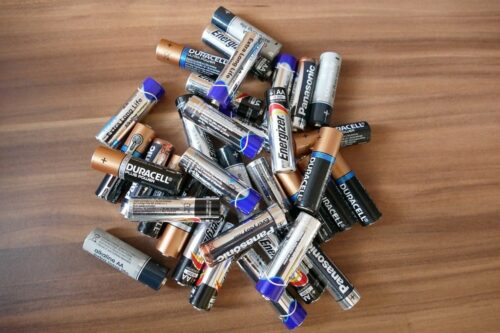Lithium-ion batteries power the world, but at what cost? Though much of modern technology is made possible by lithium-ion batteries, their underlying environmental costs and energy inefficiencies necessitate a long-term solution. While these batteries are ubiquitous, they contain heavy metals often sourced in dangerous and environmentally risky conditions. They also have relatively low energy densities and capacities—far from a perfect solution.
First discovered in the late 1960s, lithium-sulfur batteries seemed to solve these issues with ease. Sulfur is an abundant material that can be ethically sourced, and lithium-sulfur batteries have over six times the energy density of lithium-ion batteries, meaning that they produce electrical energy more efficiently. As convenient as they may seem, though, lithium-sulfur batteries facilitate destructive internal chemical interactions that cause instability and a shorter life span—issues that aren’t present in lithium-ion batteries. One of the most problematic interactions is called polysulfide shuttling, a process in which long chains of bonded sulfur, or polysulfides, are reduced at the anode, the negative terminal of the battery, to form insoluble contaminants. This reduces the amount of usable material in the battery, which decreases performance by shortening the cycle time of the battery. In essence, this causes some sulfur to be lost irrevocably, creating pollutants in the battery and reducing its overall performance and efficiency.
The Mandal Group at the Illinois Institute of Technology has focused its research on the commercialization of lithium-sulfur batteries. “[The research] was all about finding various materials that synergistically work together to address a lot of the issues with the chemistry,” said Bianca Turner, a researcher in the Mandal group. She emphasized that a sufficiently effective material could be the key to making lithium-sulfur batteries viable for commercialization. More specifically, her work has concentrated on finding a material that can combat destructive chemical interactions, especially polysulfide shuttling.
A recent paper published by their team highlights a new material called BTX that addresses many of the issues faced by lithium-sulfur batteries in the past. This particular material emerged from Turner’s original ideation and was later developed by group member Artur Suzanowicz. “I worked on creating a structure that involved using conductive additives and polysulfide-absorbing materials to address a lot of the issues with the chemistry,” Turner said. These additives, namely carbon and polypyrrole nanotubes, serve to disrupt the destructive polysulfide shuttling by attracting these contaminants so that they do not erode at the cathode—the positive terminal of the battery. In fact, BTX contains new components that not only mitigate the chemical impacts but also lengthen the cycles of the batteries, improving efficiency and decreasing degradation over time.
Until recently, lithium-sulfur batteries were insufficient to replace traditional lithium-ion batteries due to major concerns with their chemical instability and short degradation times. However, researchers are making steps toward creating more sustainable energy containment solutions. The ongoing pursuit of superior materials to enhance the capabilities of lithium-sulfur batteries will likely increase the potential for their widespread adoption in everyday life.
Image Courtesy of PICRYL.

